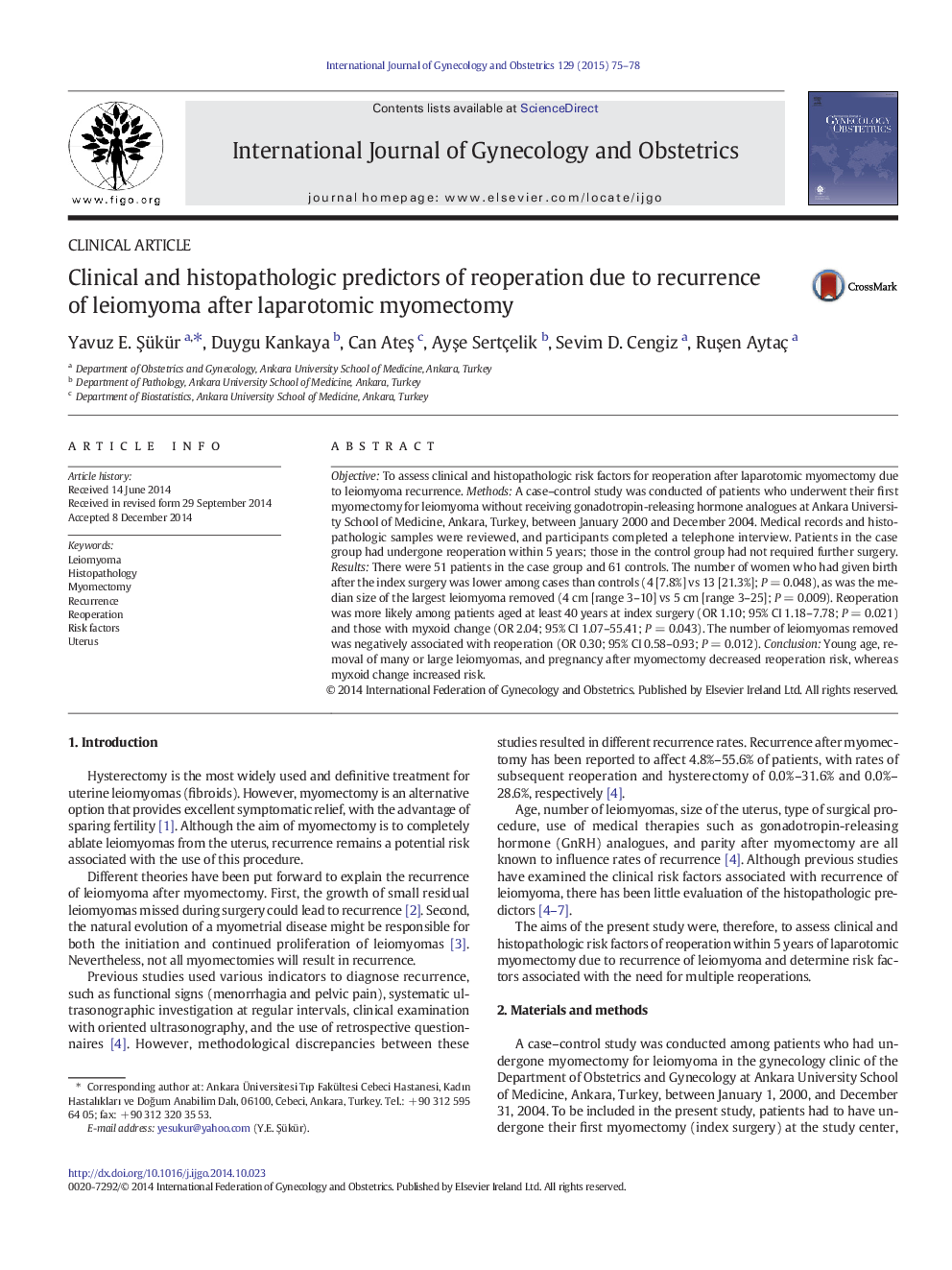| Article ID | Journal | Published Year | Pages | File Type |
|---|---|---|---|---|
| 3951781 | International Journal of Gynecology & Obstetrics | 2015 | 4 Pages |
ObjectiveTo assess clinical and histopathologic risk factors for reoperation after laparotomic myomectomy due to leiomyoma recurrence.MethodsA case–control study was conducted of patients who underwent their first myomectomy for leiomyoma without receiving gonadotropin-releasing hormone analogues at Ankara University School of Medicine, Ankara, Turkey, between January 2000 and December 2004. Medical records and histopathologic samples were reviewed, and participants completed a telephone interview. Patients in the case group had undergone reoperation within 5 years; those in the control group had not required further surgery.ResultsThere were 51 patients in the case group and 61 controls. The number of women who had given birth after the index surgery was lower among cases than controls (4 [7.8%] vs 13 [21.3%]; P = 0.048), as was the median size of the largest leiomyoma removed (4 cm [range 3–10] vs 5 cm [range 3–25]; P = 0.009). Reoperation was more likely among patients aged at least 40 years at index surgery (OR 1.10; 95% CI 1.18–7.78; P = 0.021) and those with myxoid change (OR 2.04; 95% CI 1.07–55.41; P = 0.043). The number of leiomyomas removed was negatively associated with reoperation (OR 0.30; 95% CI 0.58–0.93; P = 0.012).ConclusionYoung age, removal of many or large leiomyomas, and pregnancy after myomectomy decreased reoperation risk, whereas myxoid change increased risk.
